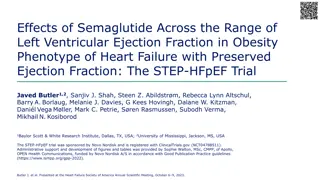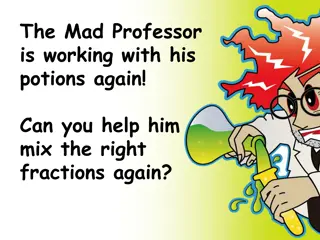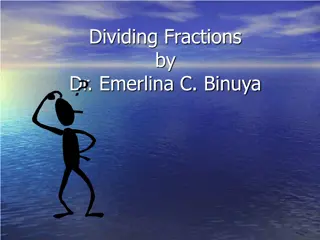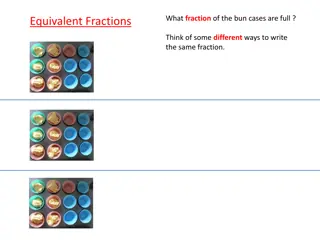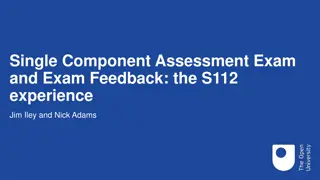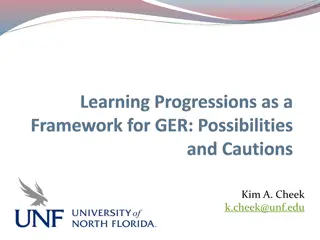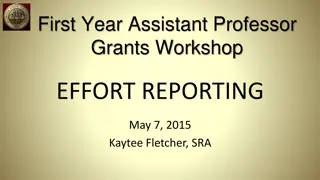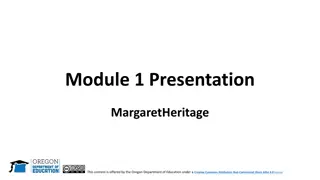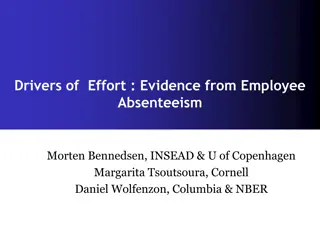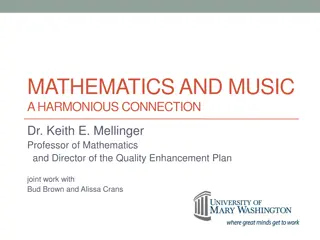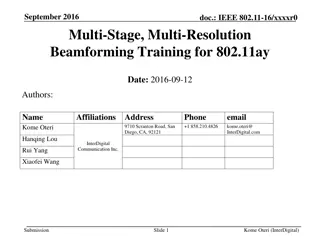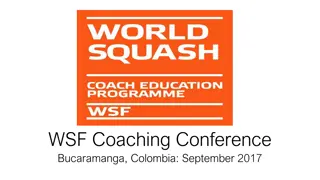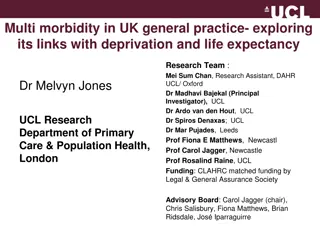Fraction Progressions PD Module - Multi-State Effort
Presented to educators, this PD module covers fraction progressions across Grades 2-6, focusing on concepts like equivalent fractions, comparing fractions, and operations with fractions. Developed by State Math Leads from multiple states and aimed at enhancing professional learning, the module emphasizes collaboration and coherence within and across grades, ensuring rigor in instruction.
Download Presentation

Please find below an Image/Link to download the presentation.
The content on the website is provided AS IS for your information and personal use only. It may not be sold, licensed, or shared on other websites without obtaining consent from the author. Download presentation by click this link. If you encounter any issues during the download, it is possible that the publisher has removed the file from their server.
E N D
Presentation Transcript
1 Fraction Progressions PD Module Presented to [group/school] on [date] A Multi-State Effort Developed by State Math Leads from KS, KY, MS, UT, & WY WDE Contact: Laurie.Hernandez@wyo.gov
2 Grades 2 6 Fraction Progressions Agenda Objectives of Presentation Fraction Overview The Meaning of Fractions Equivalent Fractions Comparing Fractions Operations with Fractions
3 OBJECTIVES Gain an understanding of the fraction progressions across Grades 2-6, informed by research on children s cognitive development and the structure of mathematics. Collaborate within and across grades. Further develop professional learning using additional resources by grade level.
4 Key Questions to Consider Throughout the Day: What type of FOCUS do I need in my grade level to help a student be successful on a problem such as this? How do we work together within AND across grade levels to ensure COHERENCE? How do we maintain proper RIGOR in our instruction including: Conceptual Understanding, Fluency, and Application?
5 Fraction Overview Please refer to the Fraction Progressions Overview document. Please read the document individually. Underline the sentences which you believe are the most important in unit development. Share your sentences with the group. (10 min.)
6 Fractions Progressions Overview http://youtu.be/X9NFEZIkoH0 2:41 minutes
7 Activity (10 min.) Work in pairs using your CCSS-M document to: Complete the Fractions Progressions Table by identifying the fraction standards in grades 2, 3, 4, or 5 that match the descriptors. (5 min.) Label the grade, domain, and cluster (i.e. 2.G.1; 2nd grade Geometry Cluster #1). *note: gray boxes remain blank. Share your findings with the group.
FRACTIONS PROGRESSIONS GRADES 2 & 3 GRADE 4 GRADE 5 The meaning of fractions The number line and number line diagrams Equivalent Fractions Equivalent Fractions Adding and subtracting fractions Adding and subtracting fractions Comparing fractions Comparing Fractions Multiplication of a fraction by whole number Multiplying and dividing fractions Multiplication as scaling Decimals 8
FRACTIONS PROGRESSIONS GRADES 2 & 3 GRADE 4 GRADE 5 The meaning of fractions 2.G.3/3.NF.1 The number line and number line diagrams 3.NF.2.a, b Equivalent Fractions 3.NF.3.a, b, c Equivalent Fractions 4.NF.1 Adding and subtracting fractions 4.NF.3.a, b, c/4.NF.3.d Adding and subtracting fractions 5.NF.1/5.NF.2 Comparing fractions 2.MD.3/3.NF.3.d Comparing Fractions 4.NF.2 Multiplication of a fraction by whole number 4.NF.4.a, b, c Multiplying and dividing fractions 5.NF.3/5.NF.4.a/5.NF.6/5.NF7.a Multiplication as scaling 5.NF.5.a/5.NF.5.b Decimals 4.NF.5/4.NF.6/4.NF.7 9
10 Where are the Cookies? Mrs. James left a tray of cookies on the counter early one morning. Larry walked by before lunch and decided to take 1 3 of the cookies on the tray. Later that afternoon Barry came in and ate 1 Terry saw the tray of cookies and ate 1 remaining at that time. The next morning Mrs. James found the tray with only 6 cookies left. How many cookies were on the tray when Mrs. James first left it on the counter? 4 of the remaining cookies. After supper 2 of the cookies
11 Unit 1: The Meaning of Unit Fractions http://vimeo.com/66775207#at=0 5:39 minutes
12 Activity (10 min.) Read the section of the Progressions Document on development of the meaning of fractions and the number line. Work in pairs to answer the following question: What are the important aspects of fractions that provide opportunities for the mathematical practice of attending to precision?
13 Specifying the Whole Explaining what is meant by equal parts
14 Unit 2: Equivalent Fractions http://vimeo.com/68240897#at=0 4:49 minutes
15 Equivalent Fractions Using an area model prove and justify that: 2 3= 4 3 4 2 4.NF.1 Explain why a fraction ? models, with attention to how the number and size of the parts differ even though the two fractions themselves are the same size. Use this principle to recognize and generate equivalent fractions. ? ? ? ?by using visual fraction ? is equivalent to a fraction
16 Equivalent Fractions Using an area model prove and justify that: 2 3= 4 2 4 3 = 3 5 Number and Operations Fractions Progressions
17 Discussion (5 min.) After watching the video and doing the activity, how has your perception of equivalent fractions and creating experiences for students about equivalent fractions changed?
18 Unit 3: Comparing Fractions http://vimeo.com/68253451#at=0 7:09 minutes
19 Which Fraction is Larger? (The following fractions are for demonstration purposes only and are NOT grade specific.) 1. Using number line diagrams, determine which fraction in each pair is larger. a. 4 4 7 b. 5 7 8 c. 3 2 9 5 , 6 , 8 , 2. What rules about the relative sizes of fractions can you state from these examples? Be as precise as you can in expressing your rules, without using the terms: numerator , denominator , top number , or bottom number .
20 Activity (10 min.) Read the section of the Progressions Document on Grade 4 Equivalent Fractions. Work in pairs to answer the following question: How can the use of area models and number line diagrams solidify a student s understanding of fraction comparison?
21 Unit 4: Adding Fractions http://vimeo.com/71842832#at=0 5:37 minutes
22 Activity (3 min.) Solve the following problem without using the traditional common denominator approach: 3 4+1 3
Demonstration of one Possible Solution 3 9 1 ???? 4 12 1 4 1 ???? 3 12 23
Final Solution 13 12 9/12 4 / 12 1 ???? 24
25 Activity (5 min.) Read the section of the Progressions Document on Grade 4 and Grade 5 Adding and Subtracting Fractions. Work in pairs to answer the following question: How could a student build on their previous understanding of adding/subtracting whole numbers in order to add/subtract fractions?
26 Unit 5: Multiplying Fractions (Part 1) http://vimeo.com/71857774#at=0 3:57 minutes
27 Questions for Discussion (10 min.) Work in pairs to: discuss how multiplying a fraction by a whole number is similar to/different from multiplying whole numbers. (5 min.) discuss some of the misconceptions students may have when multiplying a fraction by a whole number. (5 min.)
28 Unit 6: Multiplying Fractions (Part 2) http://vimeo.com/71859340#at=0 5:48 minutes
29 Questions for Discussion (10 min.) Work in pairs to: discuss one advantage and one disadvantage of using an area model when multiplying two fractions. create an area model that justifies each of your responses.
30 Questions for Discussion (5 min.) With your partner discuss how transparencies and color markers can be used to model the problem below: 3 2 3 2 = 4 5 4 5
31 Demonstration of one Possible Solution Model for 3 Model for 2 Model for 6 20 5 4 Rotate 90
32 Activity (15min.) Read the section of the Progressions Document on Grade 4 and Grade 5 Multiplying and Dividing Fractions. (10 min.) Work with a partner to respond to the following item: Explain how creating a story/real-world context might assist a student in understanding fraction multiplication. (5 min.)
33 Unit 7: Dividing Fractions http://vimeo.com/71907763#at=0 4:50 minutes
34 50-Pounds of Rice If 9 people want to share a 50-pound sack of rice equally by weight, how many pounds of rice should each person get? Using a visual model, show how each person gets the same amount. (5 min.)
35 Multiplying/Dividing Fractions Discussion Questions (10 min.) What models are used for multiplying/dividing fractions in the videos and Progressions? What are the advantages to using different models of multiplying/dividing fractions?
36 Where are the Cookies? (3 min.) Mrs. James left a tray of cookies on the counter early one morning. Larry walked by before lunch and decided to take 1 3 of the cookies on the tray. Later that afternoon Barry came in and ate 1 Terry saw the tray of cookies and ate 1 remaining at that time. The next morning Mrs. James found the tray with only 6 cookies left. How many cookies were on the tray when Mrs. James first left it on the counter? 4 of the remaining cookies. After supper 2 of the cookies
37 Questions for Discussion Work with a partner to respond to the following items: How would your students approach this problem? (12 min.) What conceptual understanding of fractions does a student need in order to solve the previous problem? What instructional strategies would you use to reach students at various levels of mathematical ability?
38 Questions for Further Investigations (7 min.) What opportunities should students be given to assist with building their conceptual understanding of fractions? How do the various models of fractions build understanding? What are the consequences of a student being bound to one model (e.g. only using circles)?
39 Questions for Further Investigations (7 min.) Whole group: How could various models have been used to facilitate understanding of any of the previous activities and what does the student s choice of model tell the teacher about student understanding?(7 min.)
40 Reflections (15 min.) Discuss as a whole group the following: What type of FOCUS do I need in my grade level to help a student be successful on a problems similar to those presented in today s professional development? How do we work together within AND across grade levels to ensure COHERENCE? How do we maintain proper RIGOR in our instruction including: Conceptual Understanding, Fluency, and Application?
41 Next Steps Work with your students, gather student work, re-visit, and share students understanding and misconceptions with team or PLC. What worked? What didn t? Evaluate if individual students are ready to move on to the next concept.
42 Homework Reflection of Conceptual Understanding What opportunities should students be given to assist with building their conceptual understanding of fractions? How do the various models of fractions build understanding? List some possible outcomes of a student being bound to one model? How does your instruction allow for students to develop conceptual understanding of fractions? How is this embedded in your school s math program? How do you provide opportunities for students to demonstrate conceptual understanding of fractions? How does your school s math program support students demonstrating conceptual understanding of fractions?
43 Feedback & Reflection Professional Development Feedback Form Title:Fraction Progressions PD Please reflect on this training. Your feedback is appreciated.
44 Questions?

 undefined
undefined


























